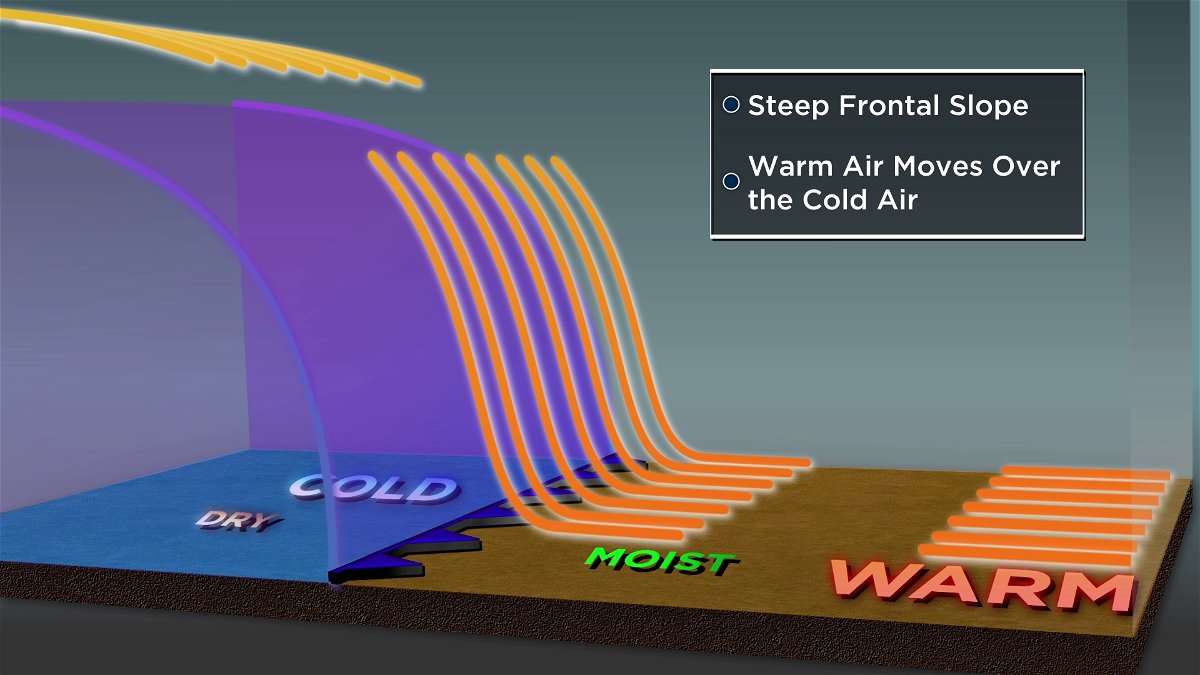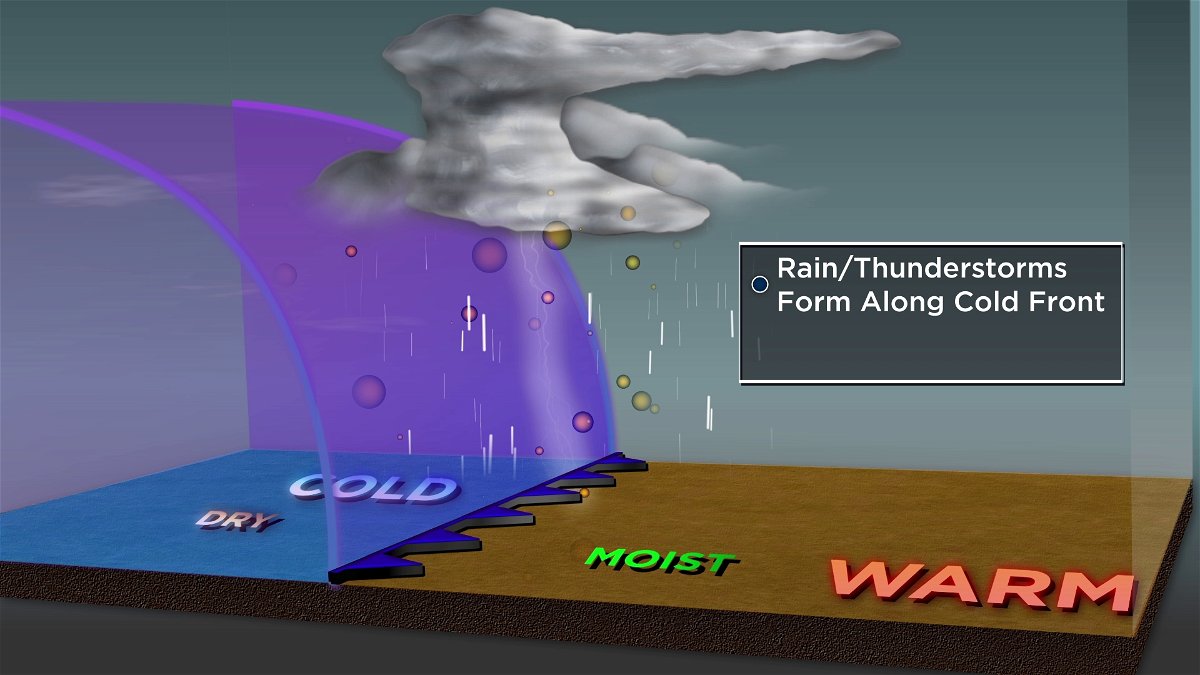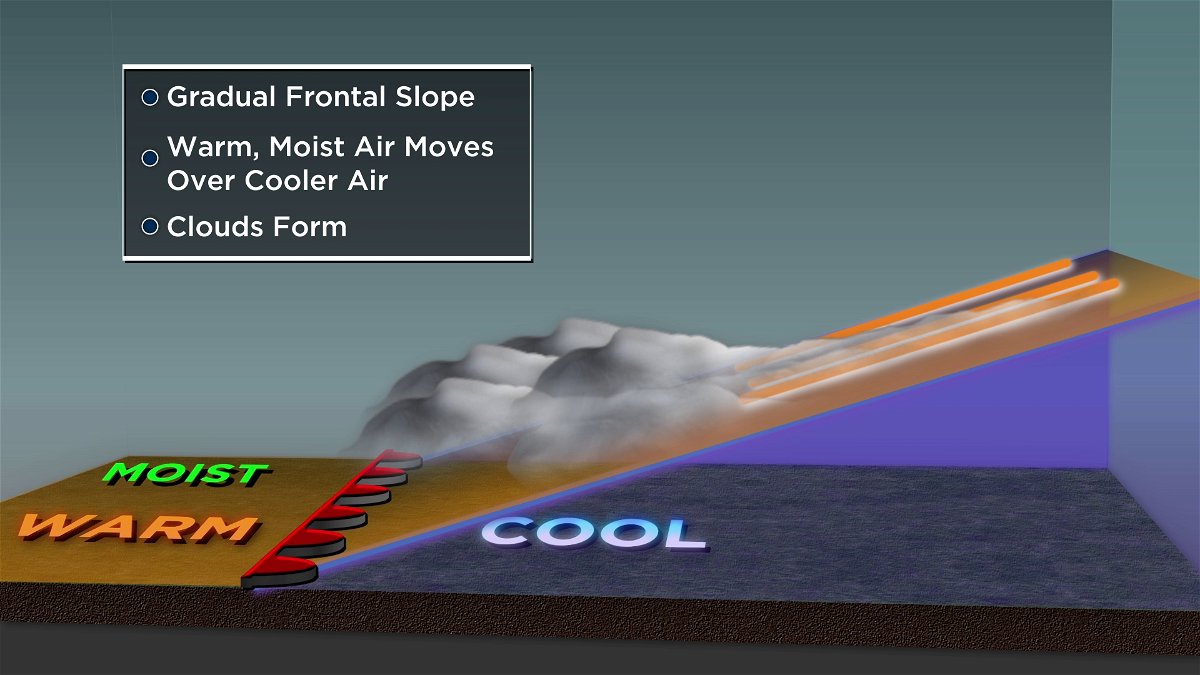How fronts drive storms
In the past, we've gone over some of the basic elements needed to create and drive thunderstorm development. Some of those ingredients include energy in the environment known as CAPE ( Convective Available, Potential, Energy), moisture to create the clouds and rain, and even shear ( changing of wind direction and speed over different heights).
One of the most important ingredients needed outside of these three is a driving mechanism. This is basically the feature that gives these other ingredients a reason to put in motion the storm development. A driving mechanism is known as a front. This time of the year, the two main fronts that we focus on for thunderstorm development is cold and warm fronts.

Cold fronts occur as cold air meets and meets warmer air ahead of it. This is the most typical front we see driving the stronger to severe storms.

Cold air is more dense driving the warm air it meets to rise and eventually cool to create clouds that eventually will lead to storm development with the aid of the other ingredients.

Warm fronts occur as warmer air catches up to a colder air mass. because colder air is more dense than that of warmer air, they typically move a lot slower. This results from the warmer air not effectively moving the cooler airmass as easily. The result of these two different air masses meeting results in the formation of clouds. It is not as typical to see severe storms along warm fronts, but it can happen in some circumstances.
Both types of fronts are expected to pass through Mid-Missouri leading to the Weather Alert day being issued lasting from Friday morning through Sunday evening. In this case, both fronts bring with them the possibility of severe storms so you'll want to make sure you stay weather aware.
